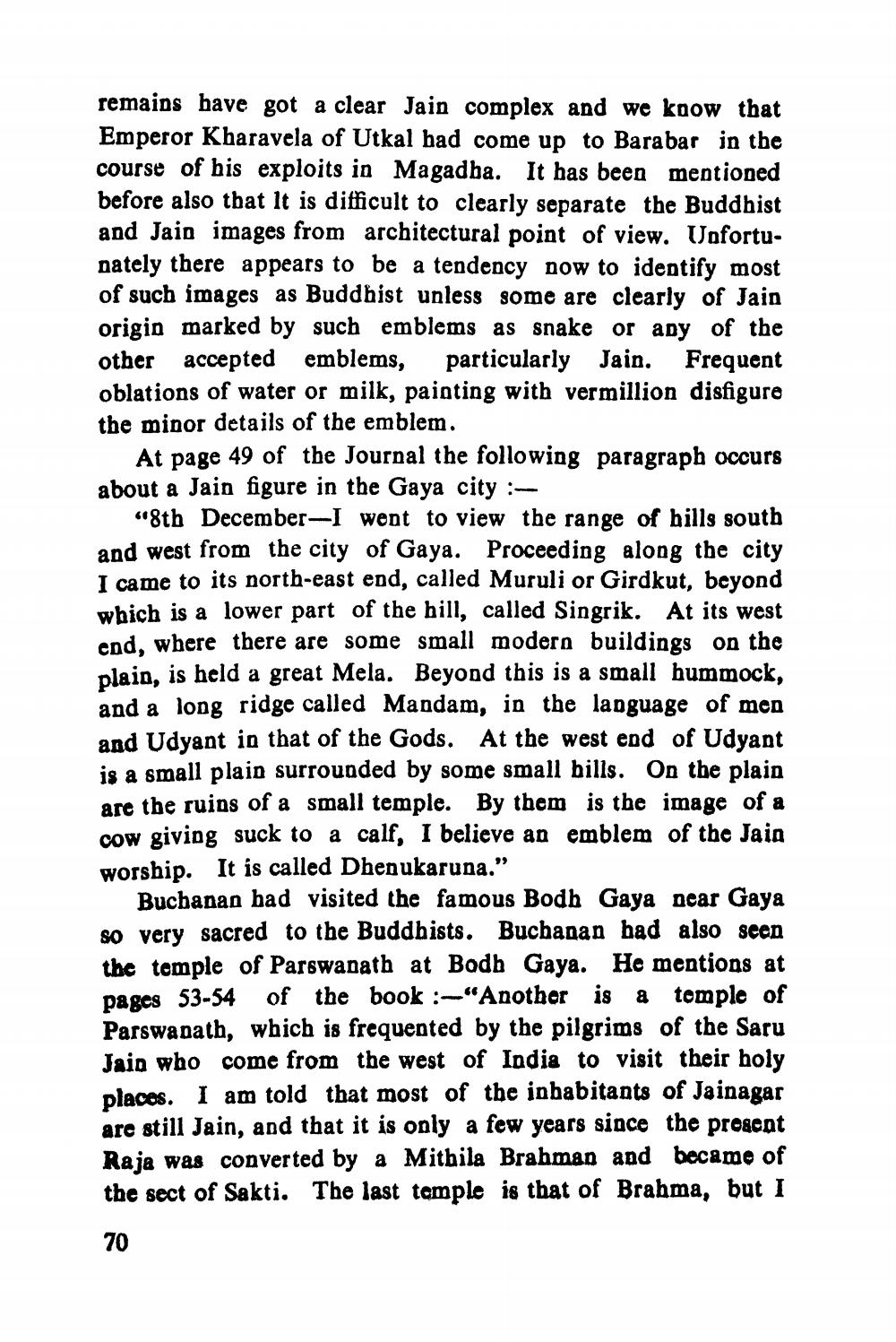________________
remains have got a clear Jain complex and we know that Emperor Kharavela of Utkal had come up to Barabar in the course of his exploits in Magadba. It has been mentioned before also that it is difficult to clearly separate the Buddhist and Jaio images from architectural point of view. Vofortunately there appears to be a tendency now to identify most of such images as Buddhist unless some are clearly of Jain origin marked by such emblems as snake or any of the other accepted emblems, particularly Jain. Frequent oblations of water or milk, painting with vermillion disfigure the minor details of the emblem.
At page 49 of the Journal the following paragraph occurs about a Jain figure in the Gaya city :
"8th December—I went to view the range of bills south and west from the city of Gaya. Proceeding along the city I came to its north-east end, called Muruli or Girdkut, beyond which is a lower part of the hill, called Singrik. At its west end, where there are some small modern buildings on the plain, is held a great Mela. Beyond this is a small bummock, and a long ridge called Mandam, in the language of men and Udyant in that of the Gods. At the west end of Udyant is a small plain surrounded by some small bills. On the plain are the ruins of a small temple. By them is the image of a cow giving suck to a calf, I believe an emblem of the Jain worship. It is called Dhen ukaruna."
Buchanan bad visited the famous Bodh Gaya near Gaya so very sacred to the Buddhists. Buchanan had also seen the temple of Parswanath at Bodh Gaya. He mentions at pages 53-54 of the book :-"Another is a temple of Parswanath, which is frequented by the pilgrims of the Saru Jain who come from the west of India to visit their holy places. I am told that most of the inhabitants of Jainagar are still Jain, and that it is only a few years since the proscat Raja was converted by a Mithila Brahman and became of the sect of Sakti. The last temple is that of Brahma, but I
70




